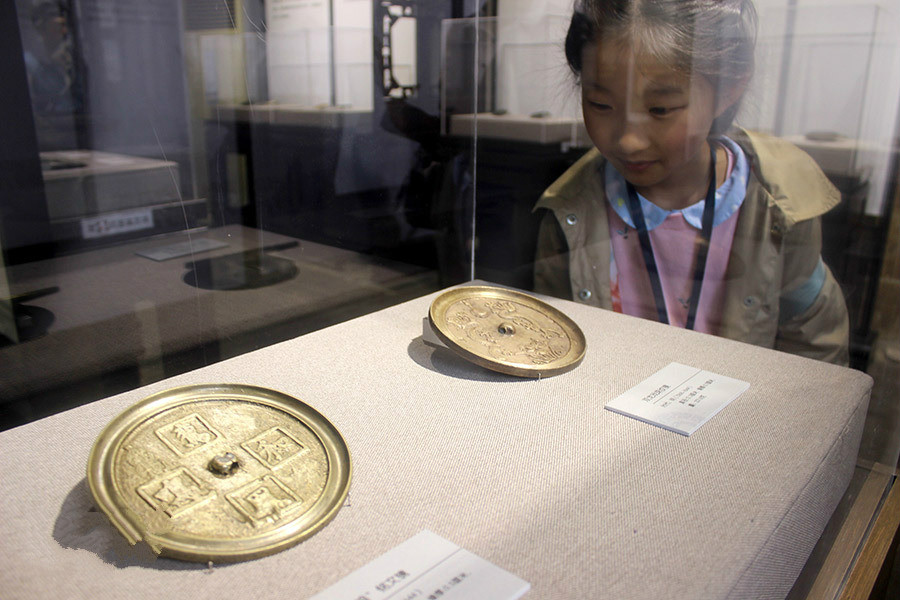Bronze mirrors reflect ancient China’s international cultural exchange results

Bronze mirrors represent a unique style of ancient bronzeware. They were prevalent during the Spring, Autumn and Warring States periods, flourished in the Han and Tang dynasties and declined in number in the Song and Yuan dynasties. Bronze mirrors were much more than daily household furniture, they were also exquisite works of art.
Former luxury items
Over 4,000 years after the appearance of bronze mirrors in the Xia Dynasty, bronze mirrors had become an indispensable part in people’s daily lives. It is said that because of high costs and manufacturing limitations, the initial bronze mirrors were only provided to members of the royal family and nobility. In the period leading up to and including the Tang and Song dynasties, bronze mirrors became more popular among ordinary people. It was rare to find a mirror with a stand before the Tang and Song dynasties, because at that time, people with higher social status had servants to hold the mirror for them. But when mirrors became common among ordinary people after the Tang and Song dynasties, they needed to hold the mirror themselves, which promoted the birth of mirrors with stands.
Exotic cultural elements
Bronze mirrors in the Spring, Autumn and Warring States periods and Han Dynasty used special techniques and had various kinds of ornamentation, such as color-painted mirrors and carved mirrors. In the Tang Dynasty, the development of Chinese bronze mirrors entered a new stage. Tang bronze mirrors were much brighter than the previous mirrors. Going beyond simple round or square shapes, Tang bronze mirrors adopted many ornate patterns, creating mirrors with patterns of birds, beasts and grapes. Also, the craftsmen at that time applied themes that reflected people’s hopes, like good luck and happiness. These themes were incorporated into the manufacturing of bronze mirrors, with the end result including images of the Moon Palace, immortals and landscapes.
The various decorations carved on the reverse side of bronze mirrors revealed different social developments. The Tang Dynasty’s most popular mirror, which had patterns of auspicious animals and grapes, is a typical example of China absorbing foreign cultural elements.
A staff member from the Palace Museum indicated that traditional engraving patterns tended to be auspicious animals, but the grapes were a common feature of the Western Regions, the area west of Yumenguan in the Han Dynasty, including today’s Xinjiang Autonomous Region and parts of Central Asia. Because the Tang Dynasty absorbed different cultures with an open mind, the culture and art of the Western Regions was introduced to the Central Plains through the Silk Road.
Influences in Japan
Bronze mirrors were a cultural carrier between China and Japan through maritime trade. Japanese mirrors followed the manufacturing techniques of Chinese bronze mirrors and developed their own styles.
The earliest Japanese bronze mirrors were developed after being introduced from China during the Three Kingdoms Period. Some bronze mirrors were discovered in the tombs of the Japanese Burial Mounds of the Kofun period, from the 3rd century to 7th century. These mirrors were based on the crafting techniques of Chinese bronze mirrors, and quite similar to the triangular-rimmed bronze mirrors with mythical animal designs in China. It is believed that these mirrors were either introduced from the Central Plains of China or made by Chinese craftsmen in Japan. A number of Japanese diplomats who visited China are believed to have carried Tang bronze mirrors back to Japan. Today, visitors can still enjoy the exquisite Tang bronze mirrors in Shosoin, a warehouse built in Nara, Japan, around the late 8th century.
